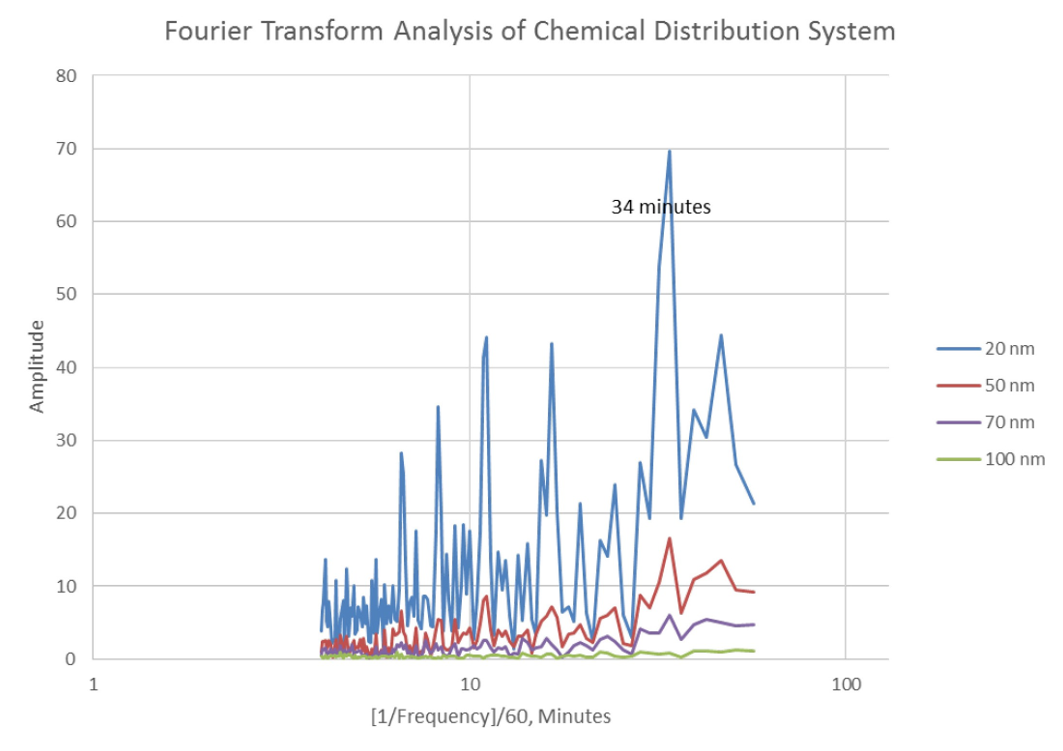Particle contamination in chemical distribution systems can be difficult to find, but costly to yield when missed.
Advanced data analysis techniques can be implemented to quantitatively assess particle contamination data in state-of-the-art chemical distribution systems. Through examining the distribution of the rate of particle detection compared to Poisson’s distribution, it is possible to determine if particle variations are random or systematic and allow for the focus of improvement efforts to reduce particle levels with time. By analyzing the particle contamination data in the frequency domain via Fourier transform analyses, periodic cycles of contamination can be identified with the goal of associating contamination events with activities within the chemical delivery system.
Nanoparticle contamination is assessed based on the statistical distribution of the particle measurement rate. The statistical distribution of the rate of particle measurement will approach a Poisson distribution for fluids without systematic contamination sources. The deviation from Poisson statistics can be used as a figure of merit to quantify the stability of nanoparticle contamination in high purity chemical systems.
Fast Fourier Transform (FFT) algorithms can transform nanoparticle contamination data over time into its frequency components. This allows for the identification of cyclic, systematic contamination sources in the distribution system and is most usefully employed when the rate of particle detection deviates significantly from Poissonian statistics.
Read this paper to learn more about:
- Quantitative mathematical methods of particle data analysis
- Experimental approach to nanoparticle contamination detection using the Chem 20™ Chemical Particle Counter and Ultra DI® 20 Liquid Particle Counter
- Deviation from Poisson (DFP) for a chemical distribution system






